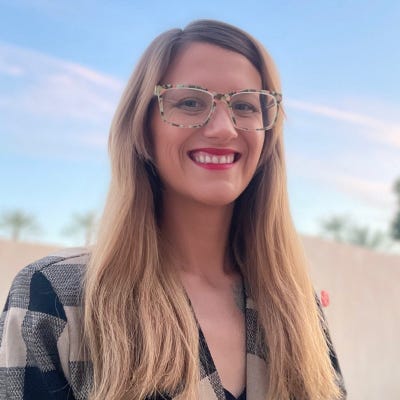Tupperware and the National Park Foundation Partner on Waste Reduction

A partnership between the National Park Foundation and Tupperware Brands aims to reduce waste and encourage "waste-free adventures."
In just under 11 months, collaborative efforts have supported the installation of dozens of water refill stations at national parks across the country, saving an estimated 10 million single-use bottles from landfills annually.
A new limited-edition Tupperware product line featuring nature scenes such as mountains and deserts give Americans the option to ditch single-use packaging, a desire that was confirmed in a recent survey co-commissioned by the National Park Foundation and Tupperware. Results showed that 84% of Americans believe reducing waste can help preserve national parks for future generations, and 83% wish it were easier to take actions to reduce the amount of waste they generate.
In a Q&A with Waste360, Cherisse Stover, senior manager, Tupperware Brands Charitable Foundation & Social Impact and Ashley McEvoy, National Park Foundation senior manager for Resilience and Sustainability discuss the partnership and how it aligns with the organizations' goals.
Waste360: When was this collaboration established and why?
Cherisse Stover: The partnership was officially established in October 2020 to elevate the shared commitment between Tupperware, the National Park Foundation, and the National Park Service to educate, provide solutions to, and raise awareness of waste reduction and diversion efforts and best practices for visitors to the more than 400 parks and programs across the National Park System. This partnership supports the National Park Foundation’s Resilience & Sustainability initiative.
The partnership supports waste reduction efforts in U.S. national parks and raises awareness about reusable products visitors can use for waste-free adventures. The National Park Foundation and partners, including Tupperware, are helping to ensure that national parks thrive today and into the future, as responsible recreation and conscious tourism are ever more important with national parks welcoming more than 300 million visitors annually. At that level of visitation, the National Park Service is managing approximately 80 million pounds of waste annually across the country.
Funding from Tupperware Brands’ Foundation is equipping the National Park Service with new water refill stations, as well as composting and recycling infrastructure and waste reduction education at parks across the country.
Our partnership is based on the shared belief that together we can nurture a better future if we find new and innovative solutions to reduce waste and increase environmental stewardship.
Waste360: Where does this partnership align with Tupperware’s environmental, social and governance (ESG) goals?
Stover: Since 1946, Tupperware has been synonymous with minimizing waste before it begins with quality, durable and reusable products. As reflected in recent survey findings conducted in partnership with NPF, consumers are indeed looking for ways to minimize waste, and an overwhelming majority of Americans agree that our partnership will make it easier for people to take actions to reduce the amount of waste they generate.
We have made great strides in the last quarter to define our ESG goals. Our NPF partnership is a real, tangible action we’re taking to hone our sustainability focus, and to align our brand purpose to nurture a better future every day – and we believe we are doing just that – we are walking the talk – by providing funding to the national parks to help encourage the reduction of single-use plastic and food waste. The partnership also supports feedback we heard from internal and external stakeholders through our recent ESG Materiality Assessment, through which “community engagement” was identified as a critical and key topic area. We’re thrilled that NPF has helped strengthen our connection with the community and our ability to be creative and purposeful in our impact.
Waste360: Where does this fit within the park system’s goals to reduce waste?
Ashley McEvoy: National Park Foundation and Tupperware are investing in the future of national parks, helping to ensure that these stunning and meaningful places thrive for generations to come through unique, innovative partnerships that focus on diverting and reducing waste from landfills through education, infrastructure, composting and recycling pilots, and other tangible solutions to help solve the waste problem at our national parks. Through this work, part of the National Park Foundation’s Resilience & Sustainability initiative, NPF is supporting a central part of the National Park Service’s mission to preserve national parks. Waste reduction and diversion in support of operations and maintenance cost savings are National Park Service priorities.
Waste360: Where will the water fill stations be placed?
McEvoy: As part of the National Park Foundation and Tupperware partnership, we are providing grants that support the installation of water refill stations at the following park sites:
Castillo de San Marcos National Monument (Florida)
Fairbanks Alaska Public Lands Information Center (Alaska)
Great Basin National Park (Nevada)
Wolf Trap National Park for the Performing Arts (Virginia)
Wrangell-St. Elias National Park & Preserve (Alaska)
National Mall and Memorial Parks (Washington, DC)
Across these parks, we have provided grants to install dozens of water refill stations.
Waste360: Will there be any consumer/visitor education initiatives to go along with the water refill stations?
McEvoy: Yes. For example, at Great Basin National Park and Yellowstone National Park, the National Park Foundation and Tupperware are also supporting the creation of in-park signage and labeling for recycling that will help visitors and park staff, including park partners and concessionaires who operate the bookstores, gift shops, and restaurants, understand what goes in the recycling versus composting versus trash bins.
Waste360: How much litter does the National Parks pick up each year? How much waste do park visitors generate on average?
McEvoy: On average, the National Park Service is managing approximately 80 million pounds of waste across the country, annually.
Waste360: Are there any other products/initiatives that are being introduced to reduce waste?
Stover: In addition to the limited-edition Tupperware and NPF product line, Tupperware has many products available that are meant for on-the-go adventures, and that can help people save time, money, food and waste, including our iconic food containers and other food storage solutions.
McEvoy: Through an innovative partnership with Subaru of America, the National Park Foundation is part of a collective effort to help reduce the amount of waste that parks send to landfills. Through this multi-year Don’t Feed the Landfills Initiative, Subaru of America is providing expertise and financial support for a pilot program at three iconic parks – Yosemite, Grand Teton, and Denali. This initiative has led to new recycling and composting infrastructure, dedicated staff for educational outreach, and marketing and labeling efforts to decrease contamination in recycling bins. Since its 2015 launch, there has been a 32% reduction in waste sent to landfills, keeping 16 million pounds of waste out of landfills while increasing recycling best practices among visitors.
About the Author(s)
You May Also Like




